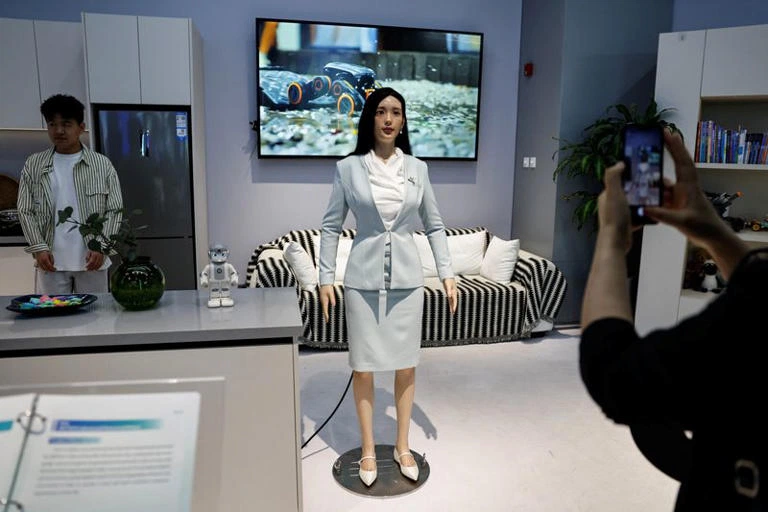Humanoid Robots in China Aim to Assist, Not Replace, Human Workers: A top Chinese official has dismissed fears that humanoid robots in China will replace human workers. Liang Liang, a deputy director in Beijing’s tech hub, spoke to foreign media on Friday. He shared that these machines are designed to assist humans, not compete with them.
The comment comes as China rapidly expands its robotics sector with strong government support. The goal is to boost productivity and handle tasks humans avoid or can’t do. The official stressed that robots will work in harsh or remote conditions where humans face limits.
Also Read | Nvidia CEO Confirms Next Nvidia China AI Chips Won’t Be From Hopper Series
Humanoid Robots in China Aim to Assist, Not Replace, Human Workers: Insights
- Liang Liang oversees the Beijing Economic-Technological Development Area, a major tech hub.
- He said robots will work in places like deep oceans or space, not human jobs.
- Machines can work at night, improving efficiency and product affordability.
- A recent robot half-marathon was held to show human-robot cooperation.
- The winning robot, Tiangong Ultra, reached 12 kph and showed impressive capabilities.
- Robots demonstrated task completion even with human interference, showing adaptability.
Background
China has made big investments in robotics, especially in humanoid robots. This includes financial backing and tech innovation from state-run programs. The focus has been on creating robots that can assist in different settings, such as factories, homes, and harsh environments.
Fears have grown that increased automation could lead to mass job losses. However, China continues to present robots as tools for support. In recent years, several events and demonstrations have showcased their growing role. This shows the country’s clear strategy of blending machines with human labor.
Main Event
Liang Liang addressed the global concern over humanoid robots in China during a press meeting with foreign journalists. Speaking from X-Humanoid’s headquarters in Beijing, he stressed that robots are not a threat to employment. Instead, they are seen as partners.
He explained that robots could work tirelessly, especially during nighttime, helping make goods cheaper and better.
A recent robot half-marathon held in Beijing illustrated this point. The event featured two tracks, one for humans and one for robots. Twenty robot teams competed on one track, while humans ran on the other. Liang said this setup symbolizes the future: humans and machines working in parallel, not against each other.
The winning robot, Tiangong Ultra, reached speeds of 12 kph. Alongside this model, other robots were shown completing simple tasks in challenging environments. In one test, a robot continued to complete a task even when interrupted by a human.
It adapted and finished the job, showing smart problem-solving. Officials believe this skill will be vital for using humanoid robots in China as workplace assistants.

At Beijing’s Robotics Industrial Park, the humanoid robot Una by UBTECH Robotics is displayed in the Robot World exhibition hall as part of a press tour in Beijing E-Town.
Photo Credits: REUTERS.
Implications
The use of humanoid robots in China could change how industries work. Businesses may benefit from higher output and reduced risks in dangerous jobs. The public may gain from better products and more safety in extreme work zones.
For the government, it shows a tech-forward approach to solving labor gaps. Experts say these machines can help, not hurt, the job market. Still, training and ethical rules will be needed as adoption grows.
Conclusion
China is pushing forward with robotics, but the message is clear: humans remain central. As humanoid robots in China evolve, they are meant to support, not replace. Events like the robot half-marathon help spread this vision. In the coming years, experts expect more collaboration between humans and machines. The focus will be on safety, efficiency, and coexistence in a tech-driven future.



